Breaking News


Popular News

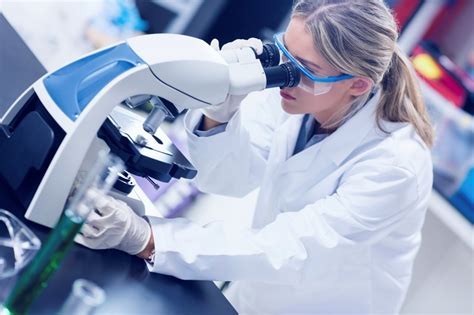
Discover the importance of forensic science in solving crimes through scientific methods, DNA analysis, ballistics, trace evidence, and digital forensics. Learn more!Forensic science plays a crucial role in solving crimes and bringing criminals to justice. From understanding the principles of forensic science to its application in crime investigations, this blog post will explore the various aspects of this fascinating field. We will delve into the use of scientific methods in analyzing evidence, the significance of DNA analysis in identifying suspects, and the role of forensic ballistics and firearms examination in linking firearms to crime scenes. Additionally, we will discuss the importance of trace evidence in crime scene investigations and how digital forensics is transforming the way cybercrimes are solved. By the end of this post, you will have a deeper understanding of the role of forensic science in the criminal justice system and how it continues to make a significant impact in solving a wide range of crimes.
Contents

Forensic science is the application of scientific principles and techniques to solve crimes. It involves the collection, preservation, and analysis of evidence from crime scenes in order to establish the truth. This field of science plays a crucial role in the criminal justice system, as it helps to identify suspects, exonerate the innocent, and provide closure to victims and their families.
One of the key components of forensic science is the use of scientific methods to investigate and solve crimes. This involves applying principles and techniques from various scientific disciplines, such as chemistry, biology, physics, and psychology, to analyze evidence and draw conclusions. By employing the scientific method, forensic scientists are able to conduct thorough and systematic investigations that are based on evidence and can withstand scrutiny in a court of law.
Another important aspect of forensic science is the use of DNA analysis in identifying suspects. This powerful tool allows forensic scientists to compare DNA samples from crime scenes to a database of known individuals, providing crucial evidence that can link a suspect to a crime or exonerate an innocent person. DNA analysis has revolutionized the field of forensic science and has become an invaluable tool in criminal investigations.
In addition to DNA analysis, forensic science also encompasses fields such as forensic ballistics and firearms examination, the significance of trace evidence in crime scenes, and digital forensics in solving cybercrimes. Each of these subdisciplines plays a unique role in the investigation and resolution of crimes, contributing to the overall success of forensic science in solving complex cases and bringing justice to victims and their families.
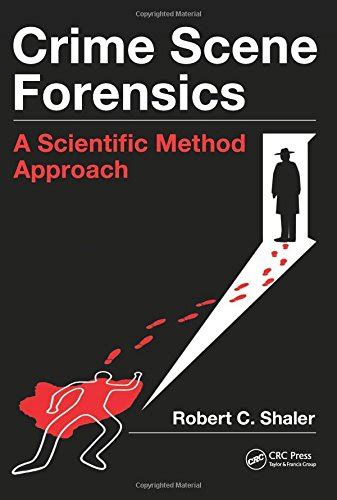
Applying scientific methods to crime investigations is an integral part of the forensic science field. The use of scientific principles and techniques helps to analyze and interpret evidence gathered from crime scenes, ultimately aiding in the process of solving crimes. One of the key aspects of applying scientific methods to crime investigations is the collection and preservation of evidence. This involves documenting and packaging all items found at a crime scene to ensure that they remain uncontaminated and unaltered.
Furthermore, forensic scientists utilize various analytical techniques such as microscopy, chromatography, and spectroscopy to examine evidence for any potential clues. These techniques can provide valuable information about the nature of the evidence and help in identifying potential suspects. Through meticulous analysis and interpretation of the collected evidence, forensic scientists can reconstruct the sequence of events that took place, shedding light on the circumstances surrounding the crime.
Another important aspect of applying scientific methods to crime investigations is the utilization of databases and comparison tools. Forensic scientists can compare their findings with existing databases of fingerprints, footprints, and DNA profiles to identify potential matches. This helps in establishing the link between the suspect and the crime scene, providing crucial evidence for law enforcement agencies and prosecutors.
In conclusion, the application of scientific methods to crime investigations plays a vital role in the forensic science field. The collection, analysis, and interpretation of evidence using scientific principles not only help in solving crimes but also in ensuring that justice is served. By employing these methods, forensic scientists continue to make significant contributions to the criminal justice system, providing valuable support to law enforcement agencies and judicial proceedings.
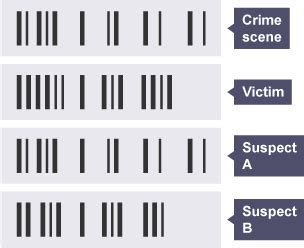
One of the most important advancements in forensic science has been the use of DNA analysis in identifying suspects in criminal investigations. The use of DNA evidence has revolutionized the way law enforcement agencies and forensic experts approach crime scenes and has significantly increased the chance of identifying perpetrators.
The role of DNA analysis in identifying suspects cannot be overstated. DNA, or deoxyribonucleic acid, is the genetic material present in every living organism. Each person’s DNA is unique to them, making it an incredibly powerful tool in forensic investigations. When DNA evidence is found at a crime scene, it can be compared to a database of known samples to identify potential suspects. This has led to countless cold cases being solved and innocent individuals being exonerated.
Using DNA analysis in identifying suspects involves a rigorous scientific process. Samples of DNA are collected from crime scenes, victims, and potential suspects and are then analyzed in specialized laboratories. The analysis typically involves comparing the DNA profile from the crime scene to the DNA profiles of known individuals, either from a suspect or a DNA database.
The use of DNA analysis has not only helped to identify suspects in criminal investigations but has also been instrumental in proving innocence. Over the years, DNA evidence has led to numerous wrongful convictions being overturned and has contributed to the exoneration of individuals who were unjustly imprisoned. The use of DNA analysis in identifying suspects has therefore had a profound impact on the criminal justice system and has significantly increased the accuracy and reliability of forensic evidence.
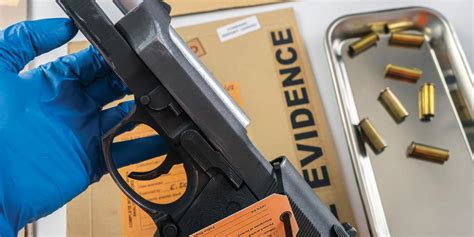
Forensic ballistics is the branch of forensic science that deals with the examination of firearms, bullets, and other ammunition to establish connections between the evidence found at crime scenes and the firearms used to commit the crimes. This involves analyzing the bullets and cartridge cases to determine the type of firearm used, as well as studying the trajectory and impact patterns to reconstruct the events of the crime. The examination of firearms, on the other hand, focuses on identifying and matching the unique markings left on the bullets and cartridge cases by the firearm itself.
One of the key aspects of forensic ballistics and firearms examination is the use of comparative analysis to link the evidence to a specific firearm. This involves studying the characteristics of the bullets and cartridge cases such as rifling marks, breech face marks, and firing pin impressions to determine whether they were fired from the same weapon. By creating a detailed profile of the firearm, forensic experts can provide vital information to law enforcement agencies in identifying and apprehending suspects involved in crimes involving firearms.
Forensic ballistics and firearms examination play a crucial role in criminal investigations, as they can provide critical evidence in cases involving shootings, homicides, and other firearm-related crimes. The meticulous analysis of the ballistic evidence can help establish the sequence of events, the position of the shooter, and the type of firearm used, ultimately aiding in the reconstruction of the crime and the determination of the guilt or innocence of the individuals involved.
| Advantages | Challenges |
|---|---|
|
|
|
|
|
|

Trace evidence refers to small pieces of physical material that are transferred from one person or location to another during the commission of a crime. This type of evidence can include hair, fibers, glass, soil, and other microscopic materials that are often overlooked at a crime scene. Despite their small size, trace evidence can play a crucial role in solving crimes and identifying suspects.
One of the key reasons why trace evidence is significant in crime scenes is that it can provide crucial links between the victim, the suspect, and the crime scene. For example, a single strand of hair or a fiber found on a victim’s clothing can provide important clues about the identity of the perpetrator. In addition, trace evidence can also help establish the sequence of events during a crime and provide valuable insights into the movements of the individuals involved.
Furthermore, the analysis of trace evidence often involves sophisticated scientific techniques that can provide conclusive evidence in a court of law. For example, modern forensic methods such as DNA analysis, fiber examination, and soil analysis can provide critical information that can either incriminate or exonerate a suspect. This scientific approach to trace evidence analysis has revolutionized the field of forensic science and has significantly improved the accuracy of criminal investigations.
In conclusion, the significance of trace evidence in crime scenes cannot be overstated. This type of evidence can provide crucial links between individuals and locations, establish the sequence of events during a crime, and provide valuable insights for investigators. The use of sophisticated scientific techniques in trace evidence analysis has greatly improved the accuracy of criminal investigations and has played a key role in solving numerous crimes.
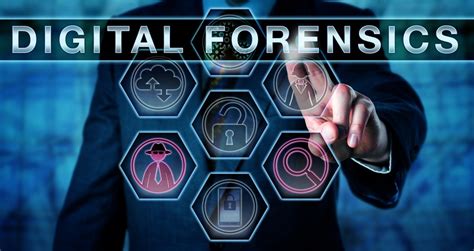
Digital forensics, also known as computer forensics, is a branch of forensic science that involves the identification, recovery, and analysis of information found on digital devices. In the context of cybercrimes, digital forensics plays a crucial role in solving and prosecuting offenders who engage in illegal activities through the use of technology.
One of the key methods used in digital forensics is the collection and preservation of digital evidence, such as emails, text messages, images, and other data stored on computers or mobile devices. This evidence can be crucial in identifying suspects and establishing their involvement in cybercrimes.
Moreover, digital forensics experts are trained to analyze and interpret the digital evidence to reconstruct the sequence of events, uncover hidden data, and determine the modus operandi of cybercriminals. By utilizing specialized tools and techniques, they can provide valuable insights into how cybercrimes are committed and help law enforcement agencies in their investigations.
Furthermore, digital forensics also plays a vital role in preventing future cybercrimes by identifying vulnerabilities in digital systems and developing security measures to protect against potential threats. Through continuous research and development, digital forensics professionals are constantly improving their methods and staying ahead of cybercriminals.

What is forensic science?
Forensic science is the application of scientific principles and techniques to solve crimes. It involves collecting and analyzing evidence to establish facts and support legal proceedings.
What are the main branches of forensic science?
The main branches of forensic science include forensic biology, forensic chemistry, forensic pathology, forensic toxicology, and forensic anthropology.
How does forensic science help in solving crimes?
Forensic science helps in solving crimes by examining physical evidence such as DNA, fingerprints, and trace materials to link suspects to the crime scene and provide crucial evidence in court.
What role does forensic science play in criminal investigations?
Forensic science plays a crucial role in criminal investigations by aiding law enforcement in identifying suspects, reconstructing crime scenes, and determining the cause of death in homicide cases.
What are some common techniques used in forensic science?
Common techniques used in forensic science include DNA analysis, fingerprint analysis, ballistics, toxicology, and digital forensics.
Can forensic science be used to exonerate the wrongly accused?
Yes, forensic science can be used to exonerate the wrongly accused by providing evidence that proves their innocence, often through the use of DNA analysis.
What challenges does forensic science face in solving crimes?
Forensic science faces challenges such as the potential for human error in analysis, the need for more advanced technology, and the processing of a large backlog of evidence in some cases.